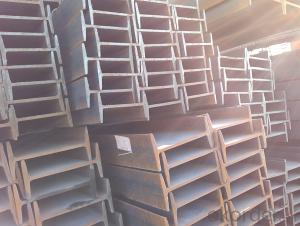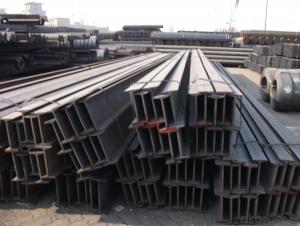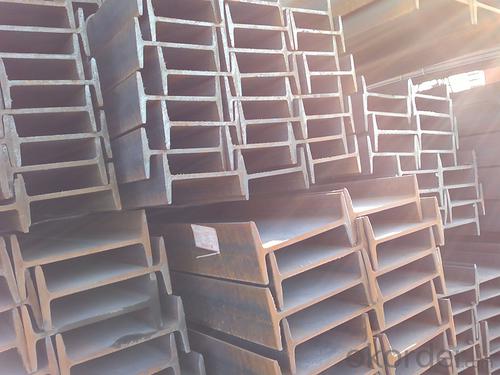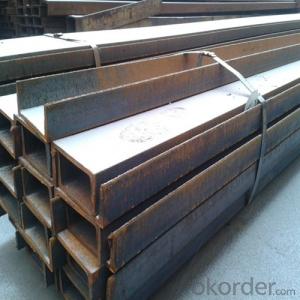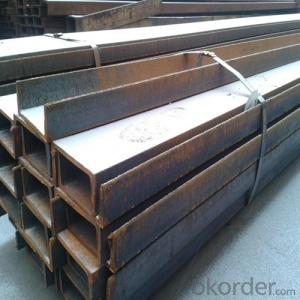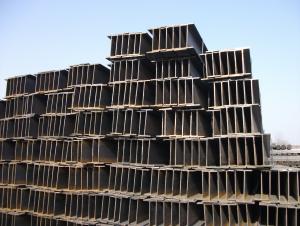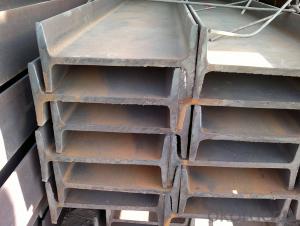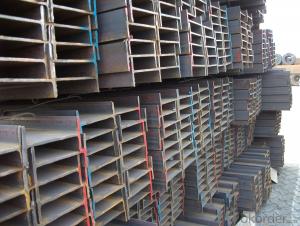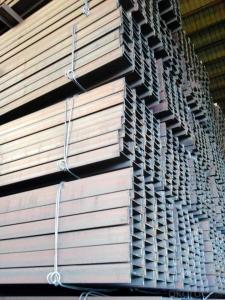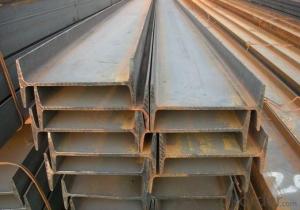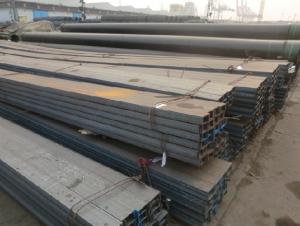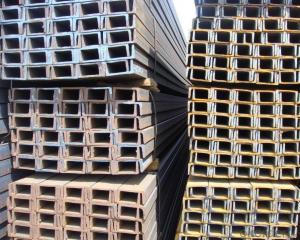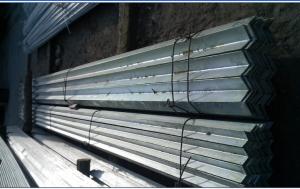I BEAM
- Loading Port:
- China Main Port
- Payment Terms:
- TT OR LC
- Min Order Qty:
- -
- Supply Capability:
- -
OKorder Service Pledge
OKorder Financial Service
You Might Also Like
1. Product name: IPE/IPEAA Beam Steel
2. Standard: EN10025, GB Standard, ASTM, JIS etc.
3. Grade: Q235B, A36, S235JR, Q345, SS400 or other equivalent.
4. Length: 5.8M, 6M, 9M, 10M, 12M or as your requirements
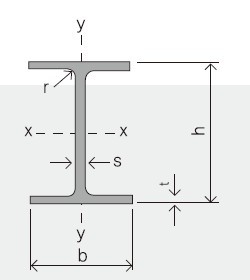
Section | Standard Sectional Dimensions(mm) | ||||
| h | b | s | t | Mass Kg/m |
IPE80 | 80 | 46 | 3.80 | 5.20 | 6.00 |
IPE100 | 100 | 55 | 4.10 | 5.70 | 8.10 |
IPE120 | 120 | 64 | 4.80 | 6.30 | 10.40 |
IPE140 | 140 | 73 | 4.70 | 6.90 | 12.90 |
IPE160 | 160 | 82 | 5.00 | 7.40 | 15.80 |
IPE180 | 180 | 91 | 5.30 | 8.00 | 18.80 |
IPE200 | 200 | 100 | 5.60 | 8.50 | 22.40 |
IPE220 | 220 | 110 | 5.90 | 9.20 | 26.20 |
IPE240 | 240 | 120 | 6.20 | 9.80 | 30.70 |
IPE270 | 270 | 135 | 6.60 | 10.20 | 36.10 |
IPEAA80 | 80 | 46 | 3.20 | 4.20 | 4.95 |
IPEAA100 | 100 | 55 | 3.60 | 4.50 | 6.72 |
IPEAA120 | 120 | 64 | 3.80 | 4.80 | 8.36 |
IPEAA140 | 140 | 73 | 3.80 | 5.20 | 10.05 |
IPEAA160 | 160 | 82 | 4.00 | 5.60 | 12.31 |
IPEAA180 | 180 | 91 | 4.30 | 6.50 | 15.40 |
IPEAA200 | 200 | 100 | 4.50 | 6.70 | 17.95 |
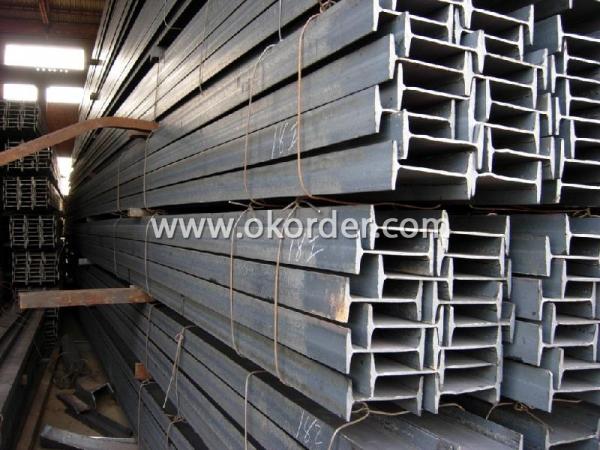
Applications of IPE/IPEAA Beam Steel
IPE/IPEAA Beam Steel are widely used in various construction structures, bridges, autos, brackets, mechanisms and so on.
Packing & Delivery Terms of IPE/IPEAA Beam Steel
1. Package: All the IPE/IPEAA Beam Steel will be tired by wire rod in bundles
2. Bundle weight: not more than 3.5MT for bulk vessel; less than 3 MT for container load
3. Marks:
Color marking: There will be color marking on both end of the bundle for the cargo delivered by bulk vessel. That makes it easily to distinguish at the destination port.
Tag mark: there will be tag mark tied up on the bundles. The information usually including supplier logo and name, product name, made in China, shipping marks and other information request by the customer.
If loading by container the marking is not needed, but we will prepare it as customer request.
4. Shipment: In containers or in bulk cargo
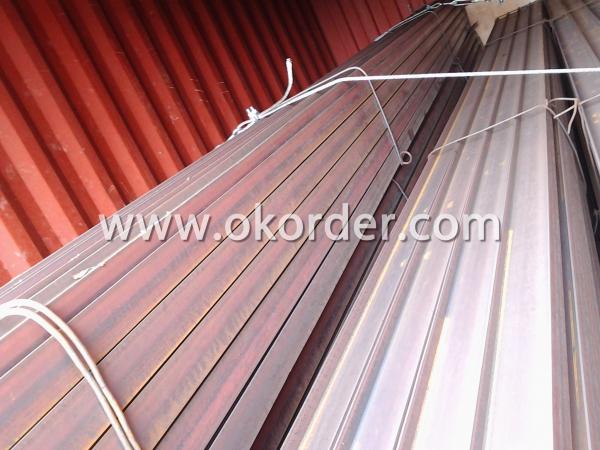
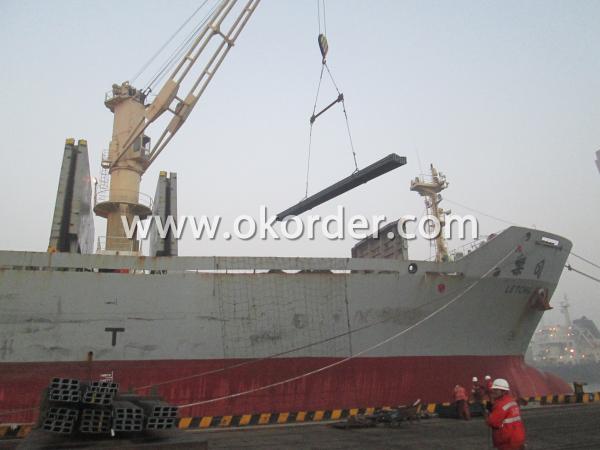
5. Delivery time: All the IPE/IPEAA Beam Steel will be at the port of the shipment within 45 days after receiving the L/C at sight ot the advance pyment.
6. Payment: L/C at sight; 30% advance payment before production, 70% before shipment by T/T, etc.
Production flow of IPE/IPEAA Beams
Material prepare (billet) —heat up—rough rolling—precision rolling—cooling—packing—storage and transportation
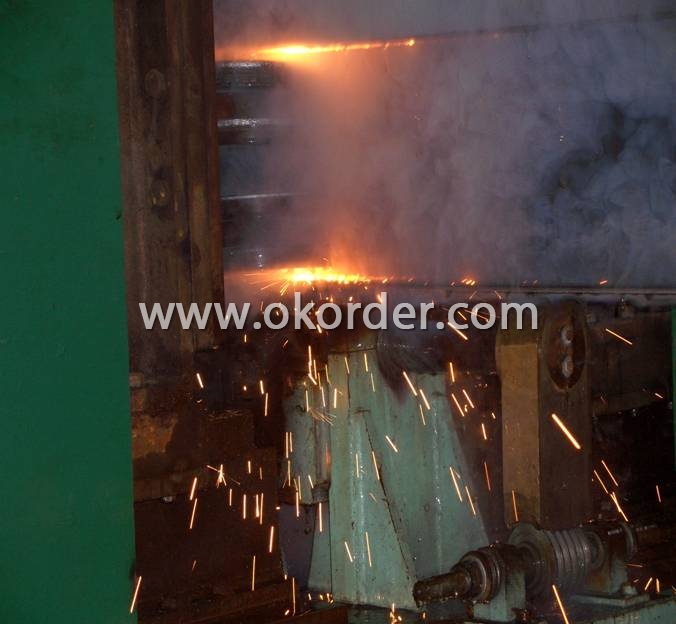
- Q: What are the common methods of installing steel I-beams in residential homes?
- There exist various common techniques for installing steel I-beams in residential homes. The direct bolted method is one of the most popular approaches. In this technique, the I-beam is positioned and aligned at the desired location, and subsequently secured by high-strength bolts that are drilled and fastened directly into the supporting structure. This method establishes a robust and reliable connection between the I-beam and the surrounding structure. Another widespread method is known as the steel plate method. With this approach, steel plates are welded to both ends of the I-beam, and these plates are then fastened or welded to the supporting structure. This technique permits a greater surface area for load distribution, resulting in increased strength and stability of the installation. A third technique is the employment of timber posts as support for the I-beam, commonly referred to as the timber post method. The I-beam is placed atop the timber posts and subsequently fastened or welded in place. This method is often utilized when installing the I-beam in an existing structure where space or accessibility is limited. Lastly, the concrete pier method involves the creation of concrete piers or footings to provide support for the I-beam. The I-beam is then placed on top of the piers and secured using bolts or welding. This method is frequently employed in areas with high load-bearing requirements or unsuitable soil conditions for other installation techniques. It is essential to acknowledge that the specific method employed for installing steel I-beams in residential homes may vary depending on structural requirements, local building codes, and the expertise of the overseeing contractor or engineer. It is always advisable to consult with a professional to determine the most suitable method for your specific project.
- Q: What are the advantages of using steel I-beams in open floor plans?
- Using steel I-beams in open floor plans offers several advantages. Firstly, their remarkable strength and durability make them perfect for supporting the weight of the structure in an open floor plan. This eliminates the need for additional supporting columns or walls, resulting in a more spacious and flexible layout. Additionally, steel I-beams have a high strength-to-weight ratio, meaning they can support heavy loads while being relatively lightweight themselves. This makes them a cost-effective option as they require less material and are easier to handle during construction. Another advantage of steel I-beams is their versatility. They can be easily customized and fabricated to fit the specific requirements of an open floor plan design. This allows architects and designers to have greater design freedom and creativity, creating unique and visually appealing spaces without compromising structural integrity. Moreover, steel I-beams have excellent fire resistance properties compared to other construction materials. In case of a fire, steel maintains its strength and integrity for a longer period, providing increased safety for occupants and allowing more time for evacuation or firefighting efforts. Lastly, steel I-beams are highly sustainable and environmentally friendly. Steel is a recyclable material, and the use of steel I-beams in open floor plans can contribute to reducing environmental impact by minimizing construction waste and supporting sustainable building practices. In conclusion, the use of steel I-beams in open floor plans offers numerous advantages including strength, durability, cost-effectiveness, versatility, fire resistance, and sustainability. These benefits make steel I-beams a popular choice for creating spacious, flexible, and aesthetically pleasing open floor plan designs.
- Q: How do steel I-beams contribute to the overall stability and strength of a structure?
- Steel I-beams contribute to the overall stability and strength of a structure in several ways. Firstly, their unique shape, which resembles the letter "I," provides exceptional resistance to bending forces. This means that I-beams are capable of supporting heavy loads and distributing them evenly across their length, minimizing the risk of sagging or collapsing. Moreover, the use of steel as the material for I-beams adds to their strength. Steel is known for its high tensile strength, meaning it can resist stretching or breaking under heavy loads. This attribute allows I-beams to withstand significant pressure without deforming or failing, ensuring the structural integrity of the entire building. Additionally, the design of I-beams allows for efficient use of materials. The top and bottom flanges of the beam are wider and thicker than the vertical web in the center. This configuration maximizes the beam's resistance to bending forces while minimizing the weight of the overall structure. The lightweight nature of steel I-beams makes them easier to handle during construction, reducing costs and labor requirements. Furthermore, the versatility of steel I-beams contributes to the overall stability of a structure. Engineers can adjust the size and shape of the beams according to the specific requirements of the building, ensuring optimal performance and load-bearing capacity. This flexibility allows for the creation of complex architectural designs while maintaining structural integrity. In summary, steel I-beams provide significant contributions to the overall stability and strength of a structure. Their unique shape, high tensile strength, efficient material usage, and versatility make them an indispensable component in modern construction, enabling buildings to withstand heavy loads and ensure the safety of their occupants.
- Q: Can steel I-beams be used in coastal areas prone to saltwater exposure?
- Yes, steel I-beams can be used in coastal areas prone to saltwater exposure. However, it is important to consider the potential effects of saltwater on the steel beams and take necessary measures to prevent corrosion. Saltwater contains high levels of salt, which can accelerate the corrosion process of steel. To mitigate this risk, several strategies can be employed. Firstly, using corrosion-resistant coatings on the steel beams is crucial. These coatings, such as zinc or epoxy coatings, act as a barrier between the steel and the saltwater, preventing direct contact and reducing the risk of corrosion. Regular inspections and maintenance of the coatings are necessary to ensure their effectiveness over time. Secondly, proper ventilation and drainage systems should be implemented to minimize the accumulation of saltwater on the steel beams. This helps to prevent prolonged exposure to saltwater, reducing the risk of corrosion. Thirdly, selecting the appropriate type of steel for the I-beams is important. Stainless steel or galvanized steel, which have higher resistance to corrosion, are often recommended for structures in coastal areas. Finally, regular maintenance and monitoring of the steel beams are essential to identify and address any signs of corrosion early on. This may involve routine inspections, cleaning, and applying additional protective coatings as needed. By implementing these measures, steel I-beams can be used effectively in coastal areas prone to saltwater exposure, providing structural integrity and durability over time.
- Q: Can steel I-beams be used for column support?
- Yes, steel I-beams can be used for column support.
- Q: Can steel I-beams be customized for specific projects?
- Certainly, specific projects can have steel I-beams customized to meet their requirements. Steel I-beams, known for their strength and ability to bear loads, are commonly used in construction due to their versatility. They can be tailored in terms of size, shape, and material specifications to suit the distinctive needs of a project. The customization of steel I-beams involves modifying their dimensions, such as length, width, and depth, to meet the precise load and span requirements of a structure. This grants engineers and architects the opportunity to design structures that function optimally and ensure safety. Moreover, steel I-beams can be manufactured from various types of steel, including carbon steel, stainless steel, or alloy steel, depending on the project's demands. This allows for the customization of the beams to ensure compatibility with the surrounding environment, such as resistance to corrosion in coastal areas or enhanced strength for heavy industrial applications. Furthermore, customization can entail incorporating specific features, such as holes, notches, or cut-outs, in the I-beams to facilitate connections with other structural components, accommodate utility conduits, or enable easy installation. In conclusion, steel I-beams can indeed be customized for specific projects. The ability to tailor their dimensions, material composition, and additional features enables the creation of structurally sound and efficient designs that meet the unique requirements of any construction project.
- Q: Are steel I-beams resistant to UV radiation?
- UV radiation is typically detrimental to steel I-beams as it induces oxidation and corrosion. Consequently, the structural integrity of the I-beams may weaken. To counteract this, a safeguarding layer like paint or galvanization is commonly applied on steel I-beams to shield them from direct UV exposure and decrease the likelihood of corrosion. Nonetheless, as time passes, these protective coatings can deteriorate and necessitate upkeep or reapplication to guarantee ongoing protection against UV radiation.
- Q: How do steel I-beams perform in terms of sustainability?
- Steel I-beams are known for their exceptional sustainability performance. The use of steel as a building material offers numerous environmental advantages. Firstly, steel is one of the most recycled materials globally, with a recycling rate of around 90%. This means that steel I-beams can be manufactured using a significant proportion of recycled steel, reducing the demand for virgin materials and conserving natural resources. Furthermore, steel is highly durable and has a long lifespan, which contributes to the sustainability of I-beams. Steel structures can withstand extreme weather conditions, such as hurricanes and earthquakes, without compromising their structural integrity. This durability reduces the need for frequent replacements or repairs, resulting in less waste generation over time. Additionally, steel has a high strength-to-weight ratio, making it a lightweight material that requires fewer resources for transportation and installation. This not only reduces energy consumption during the construction process but also minimizes the carbon emissions associated with transportation. Steel I-beams also have the advantage of being highly versatile and adaptable. They can be easily repurposed or disassembled for reuse in other projects, minimizing waste generation and extending their lifespan. This adaptability is particularly valuable in a circular economy model, where materials are continuously reused rather than discarded. Lastly, steel is non-combustible and resistant to pests, such as termites, which further enhances its sustainability. This reduces the need for chemical treatments or fire retardants, resulting in a safer and healthier built environment. In conclusion, steel I-beams offer excellent sustainability performance due to their high recyclability, durability, lightweight nature, adaptability, and resistance to fire and pests. Their use contributes to resource conservation, waste reduction, and reduced carbon emissions, making them a sustainable choice for structural applications.
- Q: Can steel I-beams be used in earthquake-prone areas?
- Yes, steel I-beams can be used in earthquake-prone areas. Steel is a highly durable and strong material that can withstand seismic forces. I-beams are designed to provide structural support and resistance to bending, making them suitable for earthquake-resistant construction. However, it is crucial to ensure that the design and installation of the steel I-beams comply with seismic codes and regulations to ensure their effectiveness in earthquake-prone areas.
- Q: Can steel I-beams be used in residential additions or extensions?
- Yes, steel I-beams can be used in residential additions or extensions. Steel I-beams are commonly used in construction due to their strength and durability. They provide structural support and can help distribute the weight of a building or addition. Using steel I-beams in residential projects allows for open floor plans and larger spans, as they can support heavier loads than traditional wooden beams. Additionally, steel I-beams are resistant to warping, sagging, and rotting, making them a reliable choice for long-lasting residential additions or extensions.
Send your message to us
I BEAM
- Loading Port:
- China Main Port
- Payment Terms:
- TT OR LC
- Min Order Qty:
- -
- Supply Capability:
- -
OKorder Service Pledge
OKorder Financial Service
Similar products
Hot products
Hot Searches
Related keywords
